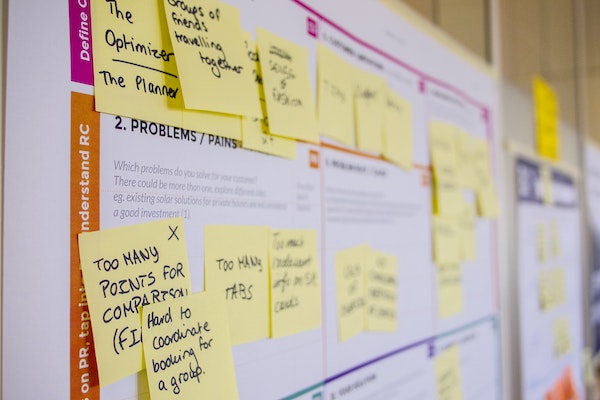Creating a startup comes with many risks; inherently, it is a hit-or-miss proposition. A study by Harvard Business School’s Shikhar Ghosh reports that 75% of startups fail.
When you are starting a small business, you are expected to develop a business idea and a plan, pitch the idea to investors, gather a team, create the product, and then sell it as much as possible. This has always been the way to create a startup until entrepreneur Eric Ries came up with the “lean startup” methodology.
What is lean startup methodology?
The goal of the lean startup methodology is to shorten the time you need to develop your product or service. The idea is to build the business from the bottom up. So, instead of going through the steps involved in traditional business development — ideating, forecasting income, margins, and demand, and building a prototype, all while possibly depleting your resources — you come up with a minimum viable product (MVP).
With lean startup, you can gain customer feedback earlier by releasing a minimum viable product to a small subset of your intended customers. The focus then is on obtaining user feedback and applying changes and iterations as needed. This makes it more possible for startup entrepreneurs to speed up their workflow and gain success earlier in the business development process without using too many resources or coming up with an elaborate business plan.
The lean startup methodology follows the build-measure-learn feedback loop. Customer feedback is the core component.
- Build. The purpose is to develop a product or service that meets market demand, and the same time, excite the customer — without wasting any resources. So, launching a perfect product is not necessarily the primary goal. Instead, the goal is to create a product — or a prototype — quickly and gain feedback as soon as possible, then make necessary changes according to the input.
- Measure. The feedback gained from the product’s initial launch should now be utilized to make relevant improvements. Testing the product will also let you know there is a demand. You can pivot away from the initial framework if there’s none, whether partially or totally.
- Learn. In this stage, your assumptions about the products will be tested against data collected from customers. It’s also called validated learning. This part of the process will help you determine the best direction to take, either to continue developing the product or start from scratch. The latter is also called a pivot.
The build-measure-learn feedback loop allows you to abandon the course, step back, and reorient yourself. This enables you to innovate and keep customers at the heart of your business development.
Lean Startup vs. Traditional Startup
To understand how a lean startup differs from its traditional counterpart, let’s list down the key characteristics.
Lean Startup
- You start with an MVP or minimum viable product to assess the reaction of the customers
- It allows you to fine-tune your product based on your market’s desires
- It prioritizes metrics such as lifetime customer value and product popularity.
- This methodology focuses on experimenting rather than sticking to a rigid plan.
Traditional Startup
- You begin by creating an elaborate business plan to be used as a strict structure for the coming years
- It requires financial forecasts
- Your business plan’s primary purpose is to gain funding from venture capitalists and angel investors
- Only the employees and investors know about the creation of your product
The Advantages of the Lean Startup Methodology

Certainty
Creating a startup can be daunting in a way that you seem to be stepping into the unknown. But with lean startup, you have a framework to follow and space to innovate as you go along the business development process. By showing your MVP to initial customers, you can gather data on what customers want, helping you decide whether to continue developing the product or abandon the initial plan and start over. Focusing on customers this way is a good starting point for monitoring customer health scores down the road.
Efficiency
The lean startup methodology makes your business development process less of a shot in the dark. The structure and framework involved — testing features of your product, obtaining feedback, learning from the feedback before making a decision — is a wiser use of time and resources.
Sustainability
You have a higher chance of building a sustainable business through validated learning. By continuously adapting, changing, and reimagining your business model according to the data you gain from customer feedback, you can create a product that the market demands.
Final Thoughts
Building a startup is not for the faint of heart. From the conception up to the later stages of maintaining it — building and upgrading security, retaining customers, and scaling your business — it takes creativity, flexibility, and innovation to make a dent in the market. The lean startup methodology is an approach that can help you increase the odds of success and create a customer-focused business culture from the ground up. Your perfectly optimized content goes here!
Written by business coach and leadership coaching expert Dominic Monkhouse. Contact him to schedule a call here. You can order your free copy of his book, Mind Your F**king Business here.

